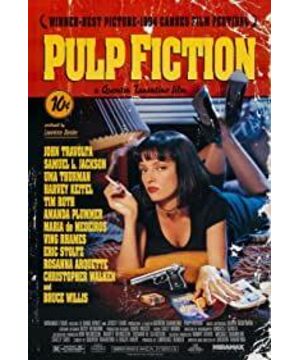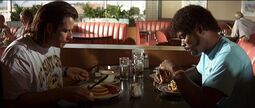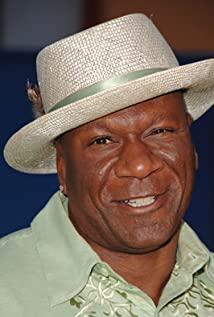My first impression was weird. There are only a handful of films I have seen, but this is the first time I feel this way. The music is weirdly good; the characters talk incessantly like a neurotic. This strange feeling is not disgust, nausea, fear, or something like that, nor is it very absurd, but an unreal sense of nothingness.
The second feeling is strong postmodernity. Not to mention the ring structure. Compared with the crash and the rainstorm, I think this film is more attractive. Because it uses the point-of-view separation structure and the sound editing to connect the stories, the structure is rigorous and the transition is natural; the second is anti-tradition, anti-classic, no center and no theme. Not to mention vulgar spoof violence, murder, pursuit, abuse, robbery, drug use, etc. There is no protagonist, no hero, no preaching, and a large piece of lines is basically pointless and meaningless. The protagonist's behavior is also absurd, unconventional and anti-traditional. For example, taxi drivers are interested in what it feels like to kill someone. The two killers were constantly arguing there over a trivial matter. Not only that, the author also packaged the film, pondering a handful of American film history, music history, and dance history. What is that shootout movie called? Mi Mi is an actress? Needless to say, music and dance are excellent, and everyone is talking about it. The indifference towards violence and evil in film noir and gangster novels, and the popularity of social life, not only makes the postmodern splicing to the level of carnival, but also makes the essence of violence and vulgarity, like Parisian fashion, sexy, noble, and profound of the times. sex. It has achieved the effect of pleasing both the refined and the popular and the word-of-mouth box office. So vulgar is not vulgar, elegant and not elegant.
Third, if it is said that violence and vulgarity are the only theme of the novel, it would be wronged. Violence is of course the main content, but after the successful application of postmodern techniques, different characters have different roles in different events, resulting in some thematic connotations, that is, the unpredictability of violence and the impermanence of life. The perpetrator of violence one moment may be the perpetrator of violence or the opponent of violence the next.
By the way, I looked at Quentin's information, and it was not easy. We have two things to learn from him. 1. Be willing to learn and use resources. Although he did not come from an academic background, he just kept watching the tapes, learned and mastered film skills, borrowed and plagiarized many things from many masters, and then pieced together everything, and he became a master himself and made a masterpiece. Although there is only one film, and the performance of the film is only that one later, it is enough to be famous in the film industry; second, independent films are very successful, and films do not necessarily have to be generous, large investment, luxurious lineup, and grand narrative.
This movie is good. Don't lift it too high though. Structural deconstruction is its contribution. Humor is not the point. It is also a domestic film made in 1994. It is also a ring-shaped structure, and the connotation of lines, pictures, and music must exceed it by a lot. In fact, I have been looking for a movie with lines, lines and classic soundtracks like East Evil and West Poison, but I have never found it.
1994 was a special year.
View more about Pulp Fiction reviews











